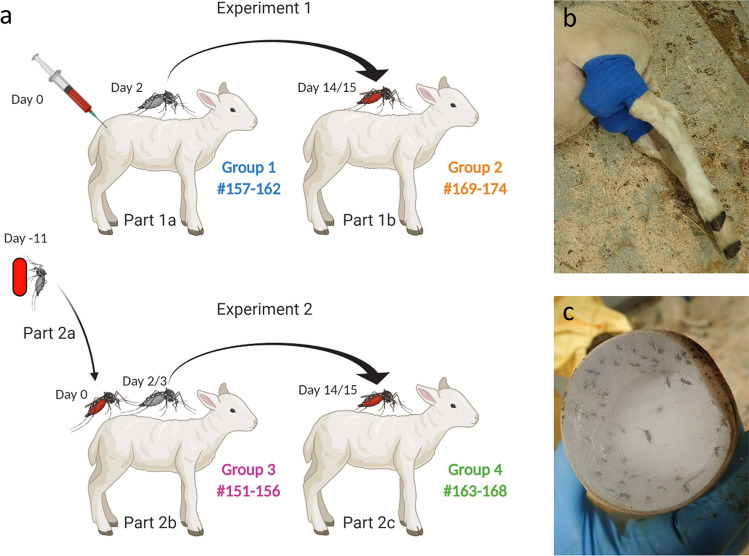Figure 1.
Schematic representation of two experiments performed to study transmission of RVFV between mosquitoes and lambs. (a) In Experiment 1, lambs were inoculated via IV route with RVFV. Two days later, when pyrexia was noted, naive mosquitoes were allowed to take a blood meal from the lambs (Part 1a). Fully engorged mosquitoes were incubated for 12–13 days, after which they were allowed to take a blood meal from lambs of Group 2 (Part 1b). Before start of a parallel experiment (Experiment 2), mosquitoes were allowed to feed on a virus-spiked blood meal using a Hemotek apparatus (Part 2a). Fully engorged mosquitoes were incubated for 11 days, until they were allowed to take a second blood meal on lambs of Group 3 (Part 2b). Two to three days later, when pyrexia was measured, naive mosquitoes were allowed to take a blood meal from the lambs of Group 3 (Part 2b). Fully engorged mosquitoes were incubated for 12–13 days, after which the mosquitoes were allowed to take a second blood meal from naive lambs of Group 4 (Part 2c). The presence of RVFV in mosquito saliva samples was determined retrospectively using forced salivation and virus isolation on Vero cells. (b) Representative picture of a cardboard box containing mosquitoes placed on the hind legs of sedated lambs. (c) Representative picture of a cardboard box after mosquito feeding. Experimental details according to the ARRIVE guidelines30 are presented in Supplementary Table S1 online.

